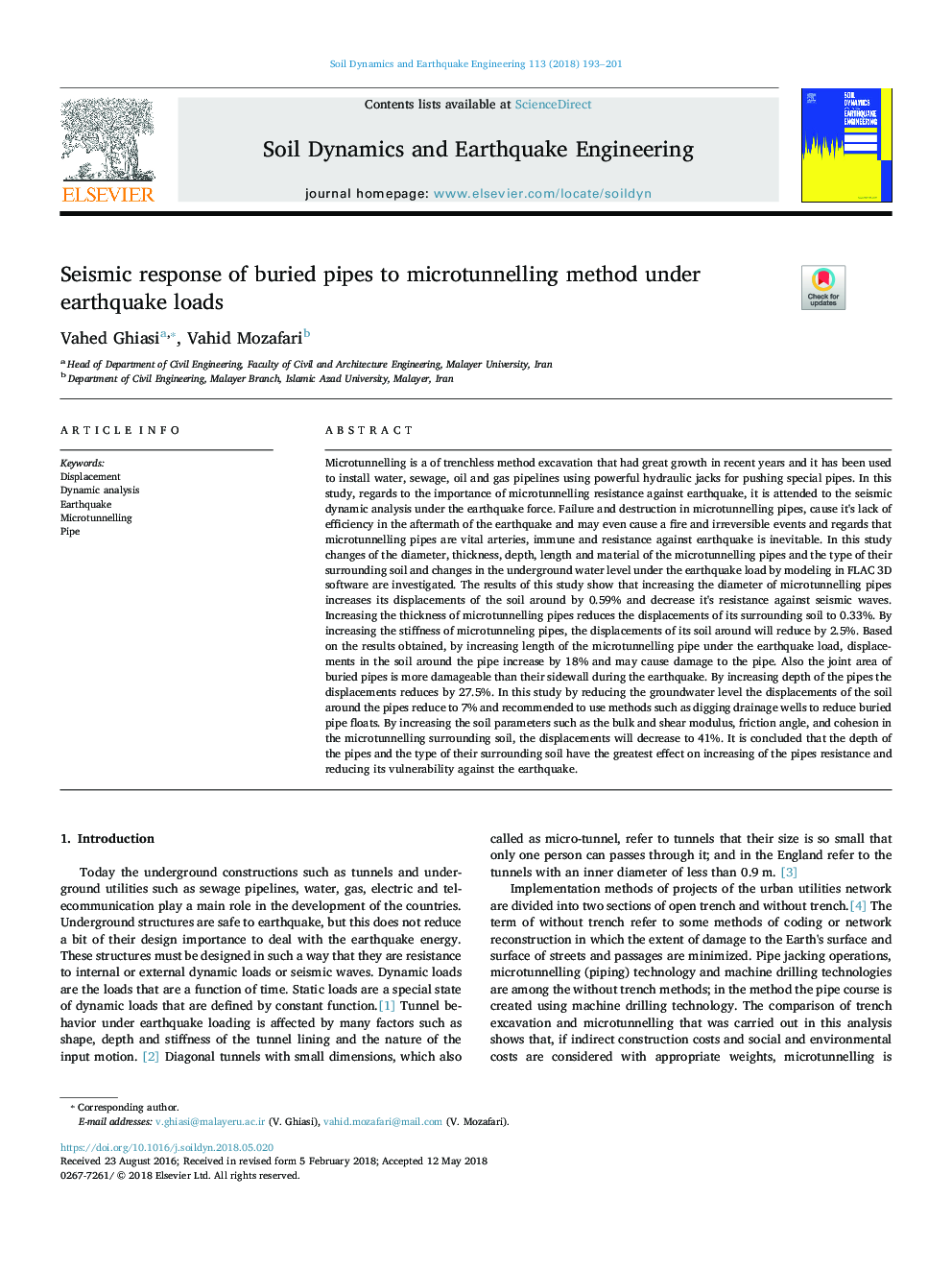| کد مقاله | کد نشریه | سال انتشار | مقاله انگلیسی | نسخه تمام متن |
|---|---|---|---|---|
| 6769907 | 1431680 | 2018 | 9 صفحه PDF | دانلود رایگان |
عنوان انگلیسی مقاله ISI
Seismic response of buried pipes to microtunnelling method under earthquake loads
ترجمه فارسی عنوان
پاسخ لرزه ای لوله های دفن شده به روش میکرو تونللینگ در بارهای زلزله
دانلود مقاله + سفارش ترجمه
دانلود مقاله ISI انگلیسی
رایگان برای ایرانیان
کلمات کلیدی
جابه جایی، تجزیه و تحلیل پویا، زمین لرزه، میکروکنترلر لوله
موضوعات مرتبط
مهندسی و علوم پایه
علوم زمین و سیارات
مهندسی ژئوتکنیک و زمین شناسی مهندسی
چکیده انگلیسی
Microtunnelling is a of trenchless method excavation that had great growth in recent years and it has been used to install water, sewage, oil and gas pipelines using powerful hydraulic jacks for pushing special pipes. In this study, regards to the importance of microtunnelling resistance against earthquake, it is attended to the seismic dynamic analysis under the earthquake force. Failure and destruction in microtunnelling pipes, cause it's lack of efficiency in the aftermath of the earthquake and may even cause a fire and irreversible events and regards that microtunnelling pipes are vital arteries, immune and resistance against earthquake is inevitable. In this study changes of the diameter, thickness, depth, length and material of the microtunnelling pipes and the type of their surrounding soil and changes in the underground water level under the earthquake load by modeling in FLAC 3D software are investigated. The results of this study show that increasing the diameter of microtunnelling pipes increases its displacements of the soil around by 0.59% and decrease it's resistance against seismic waves. Increasing the thickness of microtunnelling pipes reduces the displacements of its surrounding soil to 0.33%. By increasing the stiffness of microtunneling pipes, the displacements of its soil around will reduce by 2.5%. Based on the results obtained, by increasing length of the microtunnelling pipe under the earthquake load, displacements in the soil around the pipe increase by 18% and may cause damage to the pipe. Also the joint area of buried pipes is more damageable than their sidewall during the earthquake. By increasing depth of the pipes the displacements reduces by 27.5%. In this study by reducing the groundwater level the displacements of the soil around the pipes reduce to 7% and recommended to use methods such as digging drainage wells to reduce buried pipe floats. By increasing the soil parameters such as the bulk and shear modulus, friction angle, and cohesion in the microtunnelling surrounding soil, the displacements will decrease to 41%. It is concluded that the depth of the pipes and the type of their surrounding soil have the greatest effect on increasing of the pipes resistance and reducing its vulnerability against the earthquake.
ناشر
Database: Elsevier - ScienceDirect (ساینس دایرکت)
Journal: Soil Dynamics and Earthquake Engineering - Volume 113, October 2018, Pages 193-201
Journal: Soil Dynamics and Earthquake Engineering - Volume 113, October 2018, Pages 193-201
نویسندگان
Vahed Ghiasi, Vahid Mozafari,
